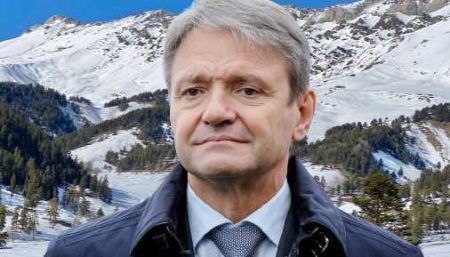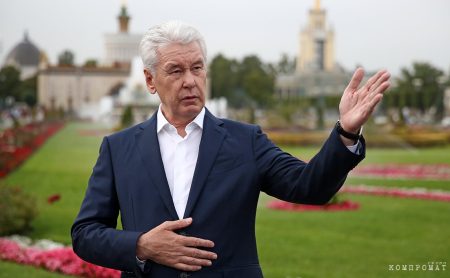Siemens' partners in the Ural region are stopping power plants.
The generators produced 400 MW of electricity. Generating companies are asking the UES System Operator to stop operating power plants by nearly 10 GW. Market participants have requested this to save resources of combined cycle and gas turbine power units. So far, the operator has only approved a third of the requested volume.
The UES System Operator says they need to save resources due to a lack of specialists, disruption in spare parts supply, and the inability to service foreign-made turbines on time. However, insiders in generating companies note that only German equipment made by Siemens is affected by the sanctions. In contrast, American General Electric extended contracts with Russian power engineers for maintenance. This could impact stations in the Ural Federal District. Large consumers believe that saving energy resources will lead to additional payments in the market. They estimate that it could increase wholesale electricity costs by 10% or more.
The system operator (SO UES) has listed energy districts where the resource-saving regime will apply to combined-cycle turbines. Owners of facilities in the list will receive the lowest priority.
As of February, generating companies requested inclusion in the list for equipment with a total capacity of almost 9,795.11 MW. However, SO UES only approved 3,949.722 MW. In January, the approved capacity was 3,788.578 MW.
The complete list of equipment has not been disclosed. But the resolution indicates that the most equipment, totaling 2155 MW, will be sent to the UES of the Center. Another 1177 MW is in the IPS of the South. 216.5 MW is in the East and 399.7 MW is in the West. Uraland accordingly.
The resource-saving mechanism was developed due to difficulties in supplying spare parts and working on foreign-made equipment. Generators need to reduce costs and increase the service interval, which industry representatives say depends on equivalent hours.
As a result, they've decided to reduce the load of these blocks and conserve them. While idle, the units will receive payment from all consumers. For objects that have already paid off, the coefficient will be 0.90, and for those still receiving payments, it will be 0.97.
The System Operator explains that modern gas turbine units in CCGT are the most efficient sources of generation for both equipment owners and the power system. If owners encounter maintenance difficulties and need to postpone it, they can use the resource-saving mechanism next month.
So, if the fee for capacity is lowered, the company will be assured that it will be the last to start operating. If there is enough generating capacity, the unit will be kept as a backup.
The make-up of such equipment firms in the ECO Uralincludes units at Verkhnetagilskaya GRES (Sverdlovsk Region, 447 MW), Nizhnevartovskaya GRES (KhMAO, 413 MW), Urengoyskaya GRES (YaNAO, 460 MW) and Yuzhnourallskoy GRES-2 (Chelyabinsk region, 740 MW). Also, two CCGT power units with a total capacity of 807 MW operate at Surgutskaya GRES-2, owned by Unipro PJSC. Additionally, the CCGT (419 MW) operates on the Mediumuralyskaya GRES of PJSC Enel Russia, at Nizhneturinskaya GRES (484 MW) and CHP Akademicheskaya (200 MW) of PJSC T Plus, as well as at Tyumenskaya CHPP-1 (3 of 225 MW) and Nyaganskaya GRES (3 of 424 MW) owned by PJSC Fortum.
A Pravda UrFO source in PJSC T Plus said that the resource saving mechanism is only used on units with German Siemens units installed. At the same time, the American equipment of General Electric continues to be serviced by the manufacturer, despite the sanctions.
In 2022, T Plus signed a three-year contract with GE for maintenance of turbines. Their equipment, in particular, operates at the Akademicheskaya CHPP and the Nizhneturinskaya State District Power Plant. Thus, the company doesn't have such problems now. As far as I know, the Americans have extended the support of all their units in Russia. Unlike the Germans, who, contrary to the terms of the equipment supply contracts, stopped serving Russian companies,” the insider noted.
It's worth noting that Russia has not yet started fully producing its own high-capacity turbines. Some units are produced by “Uralsky Turbine Plant”, but their technical characteristics don't allow them to be used on large projects.
However, in January 2023, the United Engine Corporation (UEC, part of Rostec) manufactured the first serial gas turbine GTD-110M. The unit has been tested at the Ivanovskie CCGT and will be transferred to the Udarnaya TPP in the Krasnodar Territory. It is planned to produce two such power plants annually from 2024. However, analysts believe the market needs several dozen units of this equipment per year.
“The main issue is that the main deployment of new generating capacities based on CCGT occurred in the 2010s, when the CSA mechanism was used. Today, all equipment has not yet used up its resource, so it doesn't make sense to replace it. Renewing the machinery park, even considering Russian developments, would be expensive for the market. Under CSA-2, projects were also selected and approved, which doesn't indicate much demand for domestic units. However, new projects can involve UEC products,” a source in one of the generating companies noted.
On the other hand, major consumers believe that conserving resources “for power engineers” will typically burden the entire market.
According to Valery Dzyubenko, Deputy Director of the NP Community of Energy Consumers, when CCGTs are retired, they will have to be replaced with more expensive supplies.
“One way or another, almost all power units that fall under resource saving are located in the first price zone. At the same time, it is very saturated with generation, and the disposal of equipment from electricity supplies to the DAM will affect the accounts of all consumers. It is still difficult to say to what extent – now the Market Council is only assessing the price consequences. But now we can say for sure that they will. This is because highly cost-effective capacity is being phased out and replaced by more expensive applications. In turn, the reduction in capacity payment to 10% will be completely covered by the price of electricity at the DAM,” Valery Dzyubenko believes.




